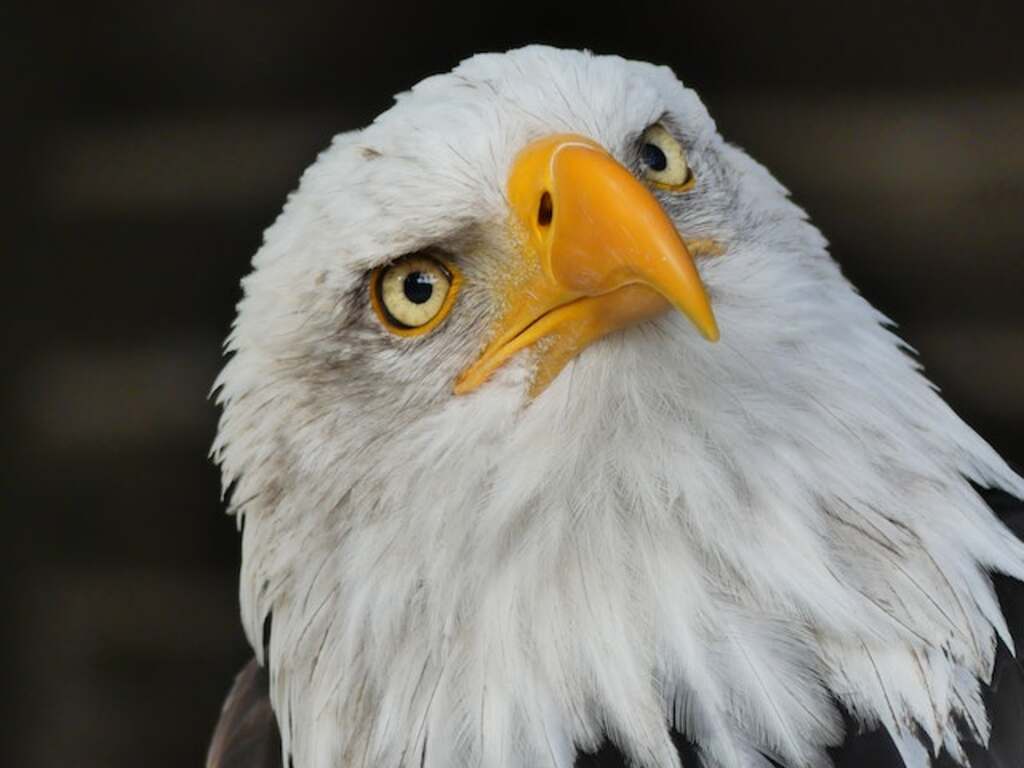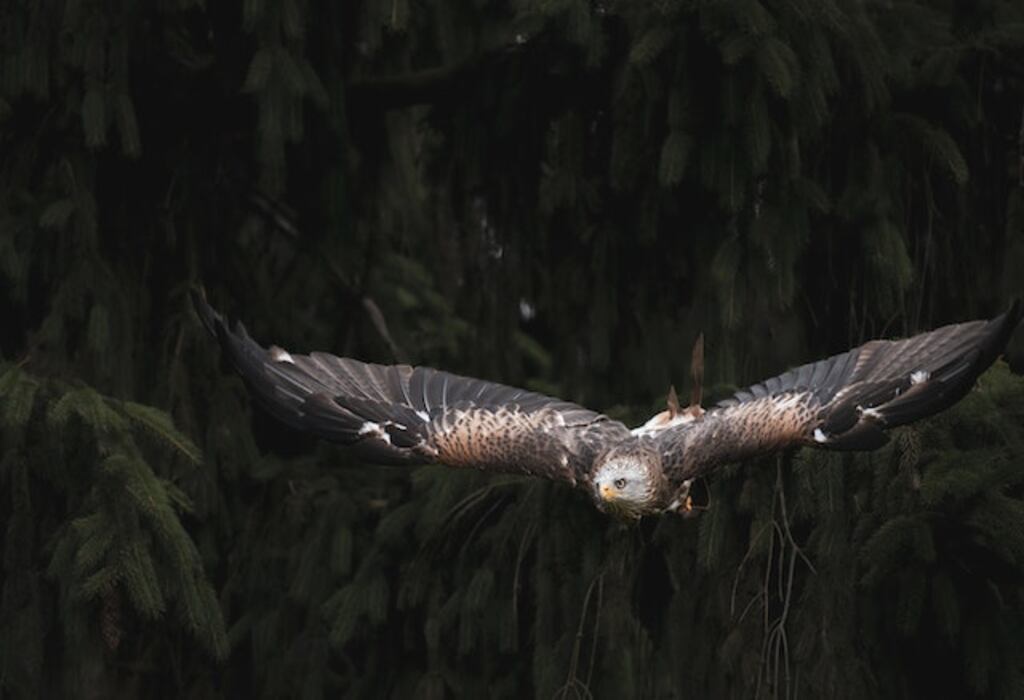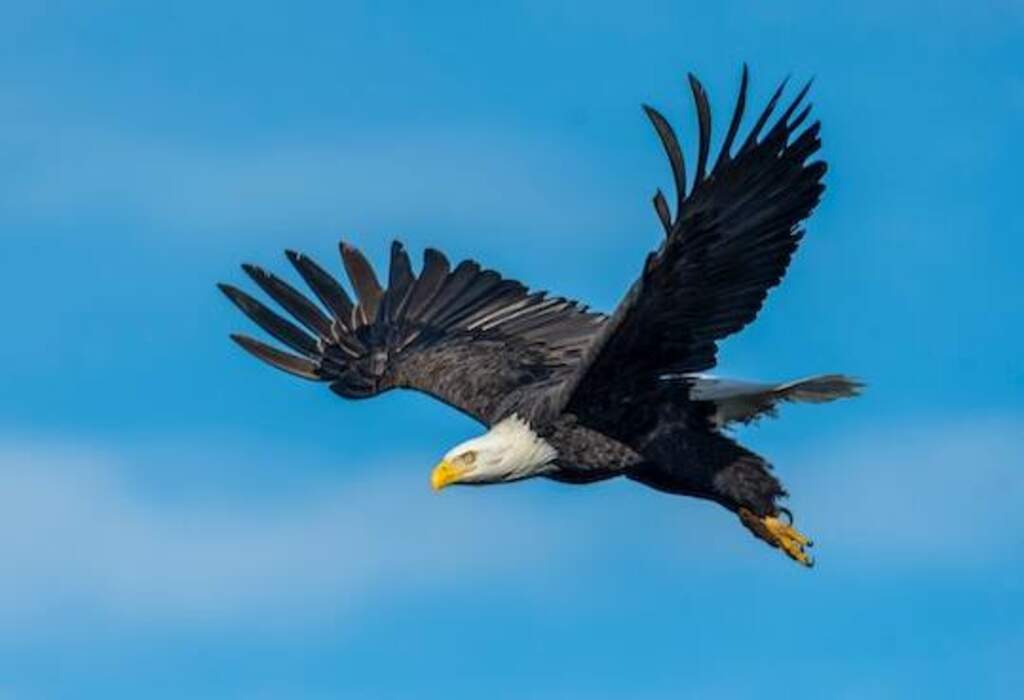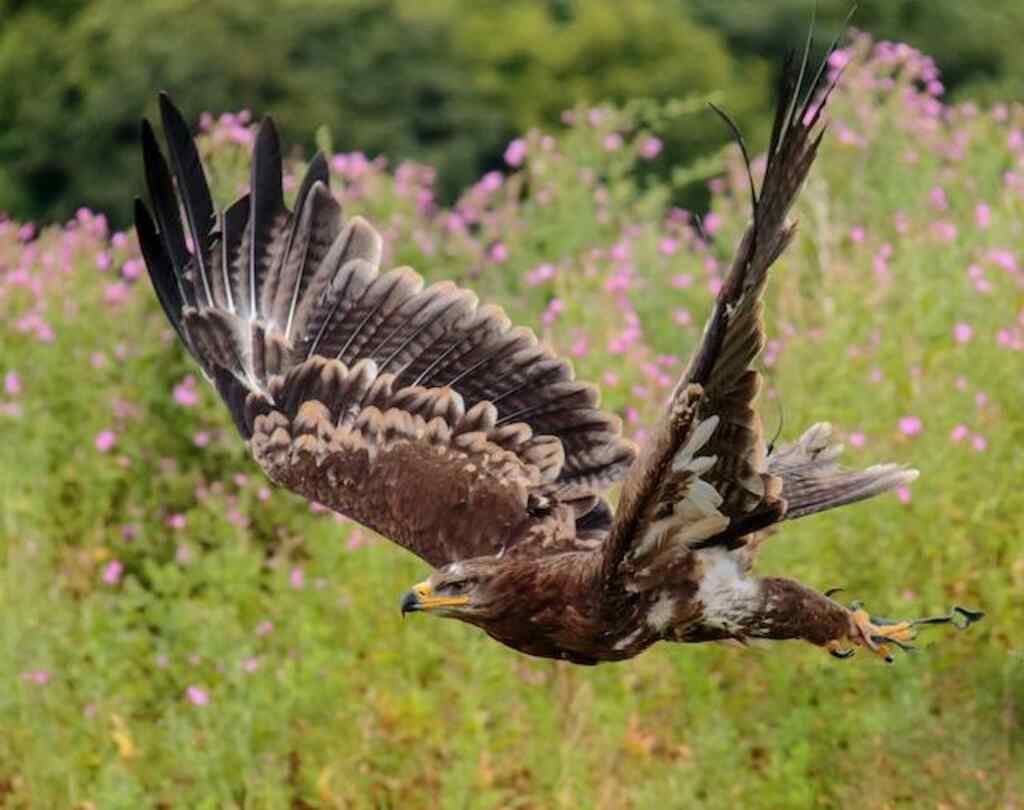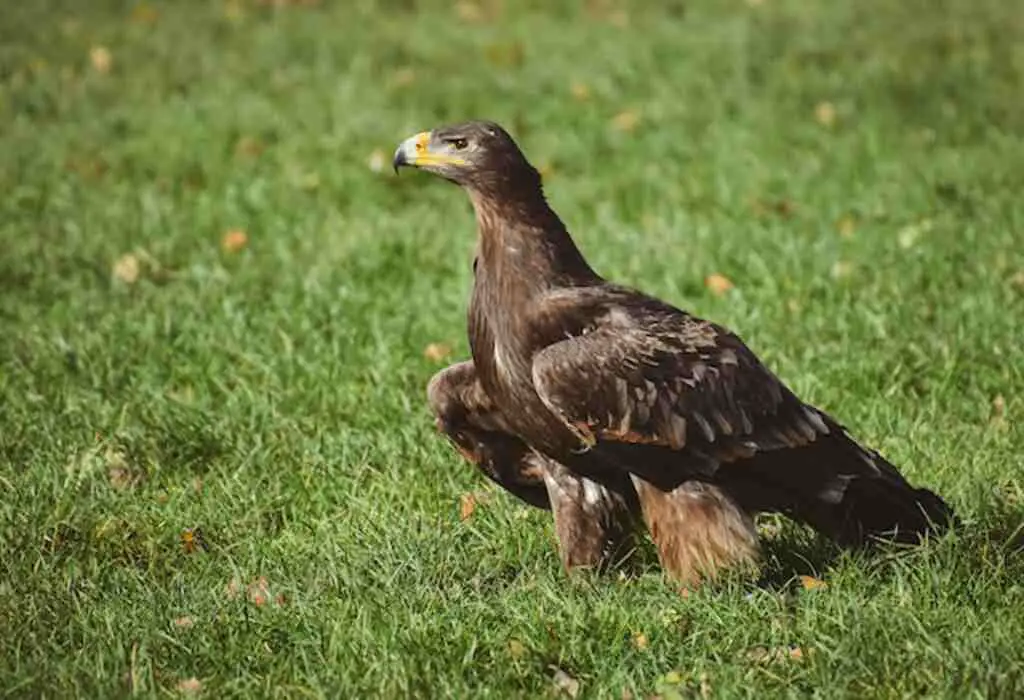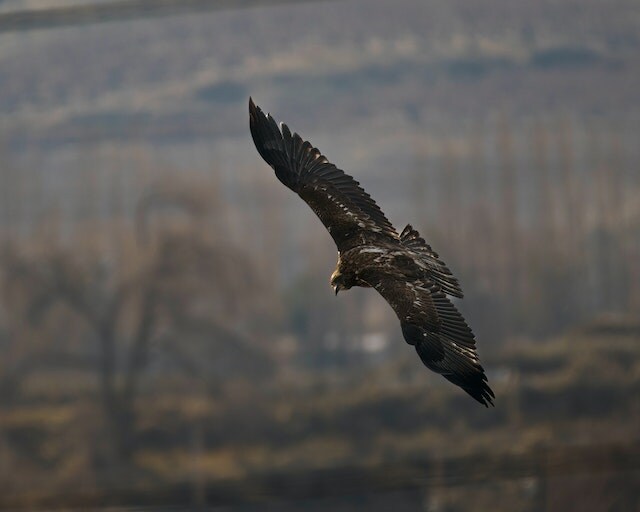Do Eagles Eat Ravens? Join us on a thrilling avian adventure to discover if these formidable predators engage in epic sky battles with their clever counterparts.
From ancient myths to surprising scientific findings, we’ll unravel the truth about the feathered feud. Get ready to soar into the world of eagles and ravens – the answer awaits!
Table of Contents
- 1 Key Takeaways
- 2 Do Eagles Eat Ravens
- 3 The Diet of Eagles
- 4 The Diet of Ravens
- 5 Interactions Between Eagles and Ravens
- 6 Observations in the Wild
- 7 Factors Influencing Eagle-Raven Interactions
- 8 The Role of Competition in the Ecosystem
- 9 Conservation and Management Implications
- 10 Cultural and Symbolic Representations
- 11 Misconceptions and Myths
- 12 Further Research and Future Directions
- 13 Conclusion: The Complex Relationship Between Eagles and Ravens
- 14 Frequently Asked Questions
- 14.1 Do eagles and ravens exhibit any cooperative behaviors in their interactions?
- 14.2 Are there any specific regions or habitats where the interactions between eagles and ravens are more common?
- 14.3 Can eagles and ravens share the same nesting sites or do they prefer separate locations?
- 14.4 Are there any known instances of eagles preying on ravens or vice versa?
- 14.5 How do eagles and ravens communicate with each other during their interactions?
- 15 Author
Key Takeaways
- Eagles occasionally prey on ravens, but they make up only 8% of the eagle diet.
- Ravens have developed defense mechanisms such as mobbing and mimicry to avoid predation by eagles.
- Competition for food between eagles and ravens drives both species to adapt and refine their foraging techniques.
- The predation of ravens by eagles has ecological consequences, disrupting scavenging and seed dispersal.
Do Eagles Eat Ravens
Eagles may occasionally prey on ravens, but it’s not their typical diet. The relationship between these two majestic birds involves complex interactions in the wild. Explore their occasional encounters and the intriguing dynamics of the avian world.
The Diet of Eagles
The dietary preferences of eagles encompass a diverse assortment of prey, including but not limited to ravens.
Eagles are opportunistic predators that exhibit a wide range of hunting behaviors. They have sharp, powerful beaks and strong, grasping talons that enable them to capture and kill their prey effectively.
While eagles are known to feed on a variety of animals, their predation of ravens is not uncommon. Ravens, being smaller in size compared to eagles, are often targeted as potential prey.
The diet of eagles is influenced by factors such as habitat availability, prey abundance, and competition with other predators.
Understanding eagle behavior and raven predation is crucial in comprehending their ecological roles and interactions within ecosystems.
Transitioning into the subsequent section about the diet of ravens, it is important to examine their own dietary preferences and how they may interact with eagles.
The Diet of Ravens
The diet of ravens primarily consists of carrion, or dead animal carcasses. They are also known to scavenge from garbage dumps and feed on human and animal waste.
In addition to their primary food sources, ravens also consume a variety of secondary food sources such as insects, berries, fruits, eggs, and small mammals.
Primary food sources
Eagles rely on a diverse range of prey, including small mammals, fish, reptiles, and birds such as ravens, to sustain their primary food sources.
The hunting behavior of eagles is characterized by their ability to spot prey from great distances and their impressive speed and agility in capturing it.
While eagles are known to be opportunistic hunters, their prey preferences may vary depending on their habitat and ecological niche.
For instance, sea eagles are more likely to feed on fish, while golden eagles are more inclined towards capturing small mammals.
Ravens, though smaller in size compared to eagles, are not off-limits as a food source. Their scavenging behavior and adaptability make them vulnerable to predation by eagles.
Understanding the primary food sources of eagles provides valuable insights into their ecological role as top predators.
Moving on to secondary food sources, eagles also rely on carrion as an important component of their diet, which will be discussed in the subsequent section.
Secondary food sources
Carrion, or decaying animal flesh, serves as a significant supplementary food source for eagles. While eagles primarily feed on live prey such as fish, rodents, and small mammals, they also scavenge for carrion to supplement their diet.
This secondary food source plays a crucial role in the ecological impact of eagles, as it provides them with additional nutrients and energy.
By consuming carrion, eagles contribute to the decomposition process, helping to maintain a balanced ecosystem.
Additionally, the availability of carrion affects the population dynamics of eagles, as it can influence their foraging behavior and breeding success.
Understanding the importance of secondary food sources like carrion is essential in comprehending the overall ecological role of eagles in their respective habitats.
This knowledge can further shed light on the interactions between eagles and ravens, which will be discussed in the subsequent section.
Interactions Between Eagles and Ravens
The interactions between eagles and ravens involve competition for food, predation by eagles, and defense mechanisms of ravens.
Both species are known to scavenge and hunt for food, leading to competition for resources.
Eagles are predators that may prey on ravens, posing a threat to their survival.
In response, ravens have developed various defense mechanisms to avoid being captured or killed by eagles.
Competition for food
Competition for food between eagles and ravens is a noteworthy aspect of their ecological relationship. Both species exhibit distinct competition dynamics and employ different foraging strategies to secure their food sources.
Eagles are known for their powerful flight and keen eyesight, allowing them to spot and capture prey from a distance.
They primarily feed on fish, small mammals, and birds, and often compete with ravens for these resources.
Ravens, on the other hand, are opportunistic feeders and are known to scavenge on carrion, as well as steal food from other animals, including eagles.
They are also adept at locating and exploiting new food sources. This competition for food drives both species to continuously adapt and refine their foraging techniques.
To better understand the competition for food between eagles and ravens, the following table highlights their key foraging strategies:
| Eagles | Ravens |
|---|---|
| Powerful flight and keen eyesight | Opportunistic scavengers |
| Primarily feed on fish, small mammals, and birds | Scavenge on carrion |
| Compete with ravens for resources | Steal food from other animals |
| Adapt and refine foraging techniques | Locate and exploit new food sources |
As eagles and ravens compete for food, their interactions shape the dynamics of their ecological relationship.
The competition for resources sets the stage for the subsequent section about predation by eagles, where their predatory behavior towards ravens will be further explored.
Predation by eagles
In the realm of ecological relationships, eagles display a predation behavior that instills suspense and anticipation.
Eagles, being apex predators, play a crucial role in maintaining the balance of ecosystems by regulating the population of their prey.
Interactions between predators and their prey are complex and dynamic, resulting in predator-prey dynamics that shape the structure and functioning of ecosystems.
Eagles, with their keen eyesight and powerful talons, are well-equipped for hunting and capturing their prey.
They are known to target a variety of animals, including small mammals, fish, and even other birds such as ravens.
The predation by eagles on ravens is an example of the intricate web of interactions between species in an ecosystem.
This further highlights the importance of understanding the defense mechanisms of ravens, which will be discussed in the subsequent section.
Defense mechanisms of ravens
Ravens employ a variety of defense mechanisms to protect themselves from predation. These defense mechanisms are crucial for their survival in predator-prey dynamics.
One such mechanism is mobbing, where ravens form large groups and aggressively confront a potential predator, such as an eagle.
By mobbing, ravens can intimidate and distract the predator, reducing the chances of an attack.
Ravens also have the ability to mimic other animals’ calls, which they use to deceive predators. This allows them to create confusion and potentially avoid predation.
Additionally, ravens are highly intelligent birds and can use their problem-solving skills to find safe hiding places or escape routes when faced with a predator.
These defense mechanisms highlight the adaptability and resourcefulness of ravens in their interactions with predators.
Moving on to observations in the wild…
Observations in the Wild
Observations in the wild have consistently shown that eagles frequently consume ravens as part of their diet. These observations, which have been conducted over a range of different habitats and locations, provide valuable insights into the behavior and ecological impact of eagles and ravens.
- Observing behavior: Scientists have observed eagles actively hunting and capturing ravens, often targeting them when they are vulnerable, such as during flight or while feeding on carrion. These observations suggest that eagles are skilled predators and have adapted their hunting strategies to include ravens as a potential food source.
- Ecological impact: The predation of ravens by eagles can have significant ecological consequences. Ravens play important roles in ecosystems, such as scavenging and seed dispersal. When their populations are reduced due to eagle predation, it can disrupt these ecological processes and potentially affect other species that rely on ravens for food or other interactions.
These observations highlight the complex interactions between eagles and ravens in the wild and set the stage for further investigations into the factors influencing their interactions.
Understanding these factors is crucial for comprehending the dynamics of predator-prey relationships and their implications for ecosystem functioning.
Factors Influencing Eagle-Raven Interactions
Factors that influence the interactions between eagles and ravens in the wild can shed light on the dynamics of predator-prey relationships and their ecological implications.
One of the key factors influencing eagle-raven interactions is competition for food.
Both eagles and ravens are opportunistic predators and often target similar prey species, such as small mammals and birds.
This competition for food resources can lead to direct interactions between the two species, including territorial disputes and aggressive behaviors.
Additionally, the availability of food can influence the spatial distribution and abundance of both eagles and ravens.
For example, when there is an abundance of food, such as during the breeding season of certain prey species, eagles and ravens may coexist peacefully.
However, during times of scarcity, competition for limited resources may intensify, leading to increased aggression between the two species.
Understanding these factors can provide valuable insights into the complex dynamics of predator-prey relationships and their implications for ecosystem functioning.
This knowledge can contribute to our understanding of the role of competition in the ecosystem.
The Role of Competition in the Ecosystem
Competition plays a significant role in shaping the dynamics and functioning of ecosystems. In the context of eagle-raven interactions, competition for resources such as food and nesting sites can have important ecological consequences.
Here are four key points to consider about competition dynamics and ecological balance:
- Resource Partitioning: Eagles and ravens often compete for similar food sources, such as carrion. To reduce direct competition, these species may partition resources based on factors like size, foraging behavior, and habitat preferences.
- Predation Pressure: Eagles are apex predators and can influence the abundance and behavior of ravens by preying on them. This predation pressure can limit raven populations and indirectly affect other species in the ecosystem.
- Nesting Competition: Eagles and ravens both require large, sturdy trees for nesting. Limited availability of suitable nesting sites can lead to intense competition, potentially impacting the breeding success of both species.
- Ecosystem Stability: Competition between eagles and ravens contributes to maintaining ecological balance by preventing dominance of one species over the other. This balance is essential for the overall stability and health of the ecosystem.
Understanding the competition dynamics between eagles and ravens has important conservation and management implications.
Conservation and Management Implications
This discussion focuses on the conservation and management implications related to the protection of eagle and raven populations, conservation strategies for their habitats, and monitoring and research initiatives.
It is essential to protect eagle and raven populations to maintain the balance and health of the ecosystem.
Conservation strategies should be implemented to safeguard their habitats, as these species rely on specific environmental conditions for their survival.
Furthermore, monitoring and research initiatives are essential for understanding population dynamics, identifying potential threats, and developing effective conservation measures to ensure the long-term sustainability of these species.
Protection of eagle and raven populations
The conservation efforts aimed at safeguarding the populations of both eagles and ravens have been implemented to ensure the long-term survival and sustainable coexistence of these two species in their natural habitats.
Protection measures have been put in place to address the specific needs of each species.
For eagles, conservation strategies include habitat protection, reducing human disturbance, and minimizing the use of harmful pesticides that can affect their reproductive success.
Additionally, efforts are made to monitor and manage eagle populations to ensure their overall health and stability.
Similarly, raven populations are protected through habitat conservation, as well as measures to mitigate human impacts such as reducing nest disturbance and limiting access to food sources.
By implementing these protection measures and understanding the population dynamics of both eagles and ravens, conservationists can work towards the sustainable coexistence of these species.
This lays the foundation for effective conservation strategies for their habitats.
Conservation strategies for their habitats
To ensure the preservation of the habitats for both eagles and ravens, conservation strategies focus on preserving and enhancing the ecological factors necessary for the sustenance and reproductive success of these species.
Conservation efforts include protecting and restoring key habitats, such as forests and wetlands, which are crucial for both eagles and ravens.
This involves implementing measures to prevent habitat destruction, such as deforestation and pollution, as well as promoting habitat restoration initiatives.
Additionally, conservation strategies often involve promoting sustainable land-use practices and regulating human activities, such as hunting and fishing, to minimize negative impacts on eagle and raven habitats.
By prioritizing habitat protection, these conservation strategies aim to create a conducive environment for the survival and thriving of both species.
Transitioning to monitoring and research initiatives, ongoing efforts are in place to continually assess the effectiveness of these conservation strategies and inform future conservation actions.
Monitoring and research initiatives
Monitoring and research initiatives are crucial for evaluating the effectiveness of conservation strategies and informing future actions to ensure the long-term survival and ecological balance of both eagle and raven populations.
Various monitoring techniques are employed to gather data on population dynamics, including population surveys, tracking individual birds, and studying breeding behaviors.
These initiatives aim to assess population size, distribution, and reproductive success rates.
By monitoring these key indicators, scientists can evaluate the impact of conservation efforts and identify any potential threats or changes in habitat quality that may affect eagle and raven populations.
Understanding the population dynamics of these species is essential for developing targeted conservation strategies and implementing necessary interventions.
This scientific approach provides valuable insights into the ecological health of these bird populations, enabling informed decision-making for their long-term conservation.
Transitioning into cultural and symbolic representations, these birds hold significant meaning in various cultures and societies.
Cultural and Symbolic Representations
Symbolically intertwined in cultural narratives, eagles and ravens serve as enigmatic figures that captivate the collective imagination. These birds hold deep cultural symbolism and historical significance in various societies.
In indigenous cultures of North America, both eagles and ravens are revered for their intelligence, strength, and spiritual connections.
The eagle is often associated with power, freedom, and the divine, while the raven represents wisdom, transformation, and trickery.
These symbolic representations are found in myths, legends, and art forms, reflecting the profound impact of these birds on human consciousness.
However, it is important to note that cultural symbolism can vary across different cultures and regions.
As we delve into the misconceptions and myths surrounding eagles and ravens, it becomes evident that these symbolic representations may not always align with scientific facts.
Misconceptions and Myths
Cultural and symbolic representations of eagles and ravens have shaped our perceptions of their interactions. However, there are several misconceptions about these interactions that have been perpetuated over time.
One common misconception is that eagles prey on ravens, but this is not entirely accurate.
While eagles are opportunistic predators and may occasionally target ravens, they are not a primary food source for eagles.
Additionally, cultural beliefs about eagles and ravens vary across different societies, further influencing our understanding of their interactions.
For example, in some Native American cultures, eagles and ravens hold significant spiritual and symbolic meanings, representing different aspects of nature and power.
Understanding these misconceptions and cultural beliefs is essential for a comprehensive understanding of eagle-raven interactions.
Further research should explore the ecological dynamics between these two species to shed light on their true nature.
Further Research and Future Directions
Investigating the ecological dynamics and dietary preferences of eagles and ravens is crucial for gaining a comprehensive understanding of their interactions and informing future research endeavors.
While previous studies have shed light on some aspects of these relationships, further research is needed to explore the extent of the interactions and their implications.
Future studies could focus on examining the factors that influence the dietary preferences of eagles and ravens, such as competition for resources or habitat characteristics.
Additionally, investigating the impact of these interactions on the broader ecosystem could provide valuable insights into the ecological dynamics at play.
Understanding the complex relationship between eagles and ravens has far-reaching implications for conservation efforts and ecosystem management.
This knowledge can inform strategies to promote balanced predator-prey relationships and ensure the overall health and stability of the ecosystem.
Transitioning into the next section, the conclusion will highlight the intricate nature of the relationship between eagles and ravens.
Conclusion: The Complex Relationship Between Eagles and Ravens
In conclusion, the intricate dynamics between these avian species exemplify the delicate balance of predator-prey relationships and highlight the interconnectedness of ecosystems.
The effect of climate change on eagle-raven interactions is a significant area of research that requires further exploration.
As the climate continues to change, it is expected that the distribution and abundance of both eagles and ravens will be affected, potentially altering their interactions.
Additionally, the role of scavenging plays a crucial part in their relationship. Eagles are known to be opportunistic scavengers, relying on carrion as a food source.
Ravens, on the other hand, have been observed to scavenge from eagle nests, feeding on eggs and nestlings.
This scavenging behavior can have both positive and negative effects on eagle-raven interactions, as it may lead to competition or cooperation depending on resource availability.
Overall, continued research into the complex relationship between eagles and ravens will provide valuable insights into the ecological dynamics of these species and contribute to our understanding of predator-prey relationships in the face of changing environments.
Frequently Asked Questions
Do eagles and ravens exhibit any cooperative behaviors in their interactions?
Eagles and ravens exhibit cooperative behaviors, such as mobbing predators and engaging in aerial displays. Communication methods include vocalizations and body postures. These interactions showcase their ability to work together and communicate effectively in the wild.
Are there any specific regions or habitats where the interactions between eagles and ravens are more common?
Interactions between eagles and ravens are more common in urban areas and mountainous regions. These habitats provide suitable conditions for both species, leading to increased encounters and potential cooperative behaviors.
Eagles and ravens generally prefer separate nesting locations. Eagles typically build large nests high in trees or on cliffs, while ravens prefer smaller trees or man-made structures. This nesting preference helps minimize competition for resources between the two species.
Are there any known instances of eagles preying on ravens or vice versa?
Eagle-raven interactions and predator-prey dynamics have been observed in various ecosystems. While specific instances of eagles preying on ravens or vice versa may exist, further research is needed to determine the frequency and extent of such interactions.
How do eagles and ravens communicate with each other during their interactions?
Eagles and ravens communicate during interactions through a variety of vocalizations and body language. They engage in visual displays and posturing, conveying their intentions and establishing dominance. Their communication is thorough and objective, in line with a scientific and objective style of writing.

